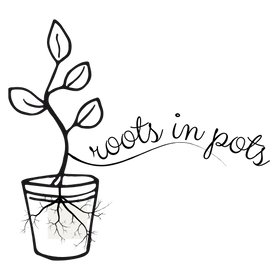· By Shawne Huff
How to help your houseplants thrive and look healthy
Tips to Choose a Healthy Houseplant
First, to keep houseplants healthy and growing, choose easy-to-care-for plants, and as your confidence (and plants) grow, add more difficult varieties to your collection.
Some of the easiest plants to grow include:
-
Chinese Evergreen
-
Monstera
-
Peperomia
-
Pothos
-
Prayer Plant (calathea)
-
Purple Spiderwort (purple tradescantia)
-
Snake Plant
-
Spider Plant
-
ZZ Plant (Zamioculas Zamiifolia)
Light Requirements
Try to bring home plants that are right for the lighting available. Plants can adjust to minor changes in lighting. However, if your new plant is not getting the right amount of light it is possible that the plant will not thrive, or could even die.
Making sure your plants get enough light is crucial
Direct Sunlight vs. Artificial Light
Does your home have low light? You can always supplement with grow lights.
How to Water Houseplants
-
Always use drainage holes in your pots. This is the easiest way to ensure you do not overwater your plants. Overwatering can kill your plants, so ensure the excess water can escape the pot, as this will save your plants.
-
Use a higher outer pot with a smaller inner pot. Add pebbles or another medium between the two pots so excess water does not pool at the bottom. This prevents the roots from standing in water, contributing to root rot.
-
Check the soil in your plant pot to detect when your plant needs water. If the soil is dry 1-2 inches down into the pot, it’s time to water.
-
Water the plant consistently. Create a schedule with a good frequency, depending on how fast your plants absorb water, then stick to it.
-
The type of water you use to hydrate your plants is important. If the tips of our plant leaves are turning brown, it could be trace minerals, fluoride, or chlorine. Try filling up a watering can and leaving it out for 24-48 hours before using it to water your plants. This will allow the additives to evaporate first.
Another easy way to water your plants is by setting the plant pot into a shallow container filled with room temperature water. Only the bottom of the pot should be in the water. This method is called bottom watering. The drainage holes in the plant pot will allow the soil to absorb water, which then is taken into the plant via the root system.
This method is ideal for plants with sensitive leaves, such as African Violets or Calatheas as the bottom watering method keeps the leaves from getting soggy. In addition, it is good to prevent root rot as the plant will only take up the water needed.
Bottom watering is best for small and medium plant pots. This method isn’t quite as effective with larger pots or those sensitive to salt build up such as alocasias.
When to Fertizlie Houseplants
One of the most rewarding aspects of growing houseplants indoors is spotting new growth. Watching a brand new leaf unfurl is among the greater joys in any horticulturist’s journey. Fertilizing your plants with nitrogen, phosphorous, and potassium will give your houseplants the nutrients they need to thrive.
So, how often should you fertilize, and what should you use?
How often you fertilize your houseplants depends upon several factors.
-
Fertilizer type
-
Plant species
-
Geographic location
-
Season of the year
During the winter, the days are shorter, and the houseplant may have a rest period. Growth will slow during this time; therefore, it is advisable not to fertilize.
You’ll want to feed your plants every two to three weeks in the spring through summer and into early fall.
In general, succulents and cacti don’t like nitrogen-based fertilizers. Instead, choose high-quality soil and compost to give them what they need to flourish.
Another tip: water your plant before you feed it with fertilizer. This will help prevent burning the plant's roots, and lightly damp soil will help the fertilizer absorb better.
Don’t leave water in the runoff dish underneath your pot. Always empty the dish after watering and draining to avoid attracting pests and keep your houseplant healthy.
Watering Schedule
To be a good plant parent, you’ll want to make sure your
Don’t shock your plants by using water that is too cold or too hot as it can damage the roots. Ideally, the water temperature should be around 68 degrees Fahrenheit, but anywhere between 59 and 77 degrees is fine.
Learn to Propagate Your Houseplants and When to Do It
Propagating your houseplants is a fun and rewarding activity. Not only will it prune the original plant, but it will also grow your collection!
Always cut your plant beneath the node
When to Repot Houseplants
If you notice roots outgrowing the plant pot, replanting in a slightly larger pot is a good idea. It is best if the new pot is slightly larger than the previous one. The rule of thumb is to only to go up one pot size per repotting period. If there is too much room in the pot, your plant could end up with root rot.
Preventing Pests and Disease
Keeping an Eye on Your Houseplant Environment
Another good tip is to keep the temperature and humidity in an optimal range. You can do this by keeping some temperature gauges and humidity monitors nearby.

